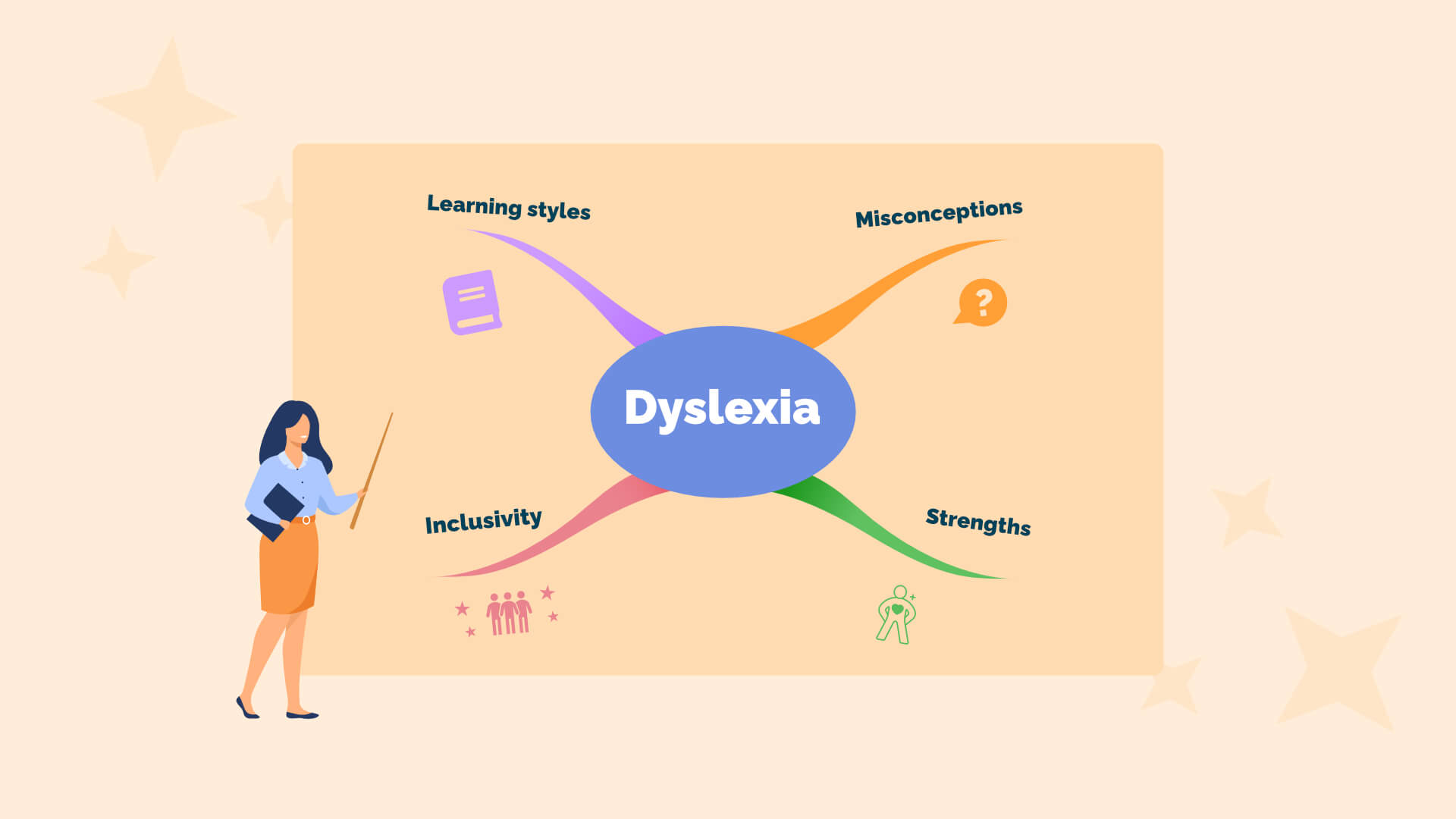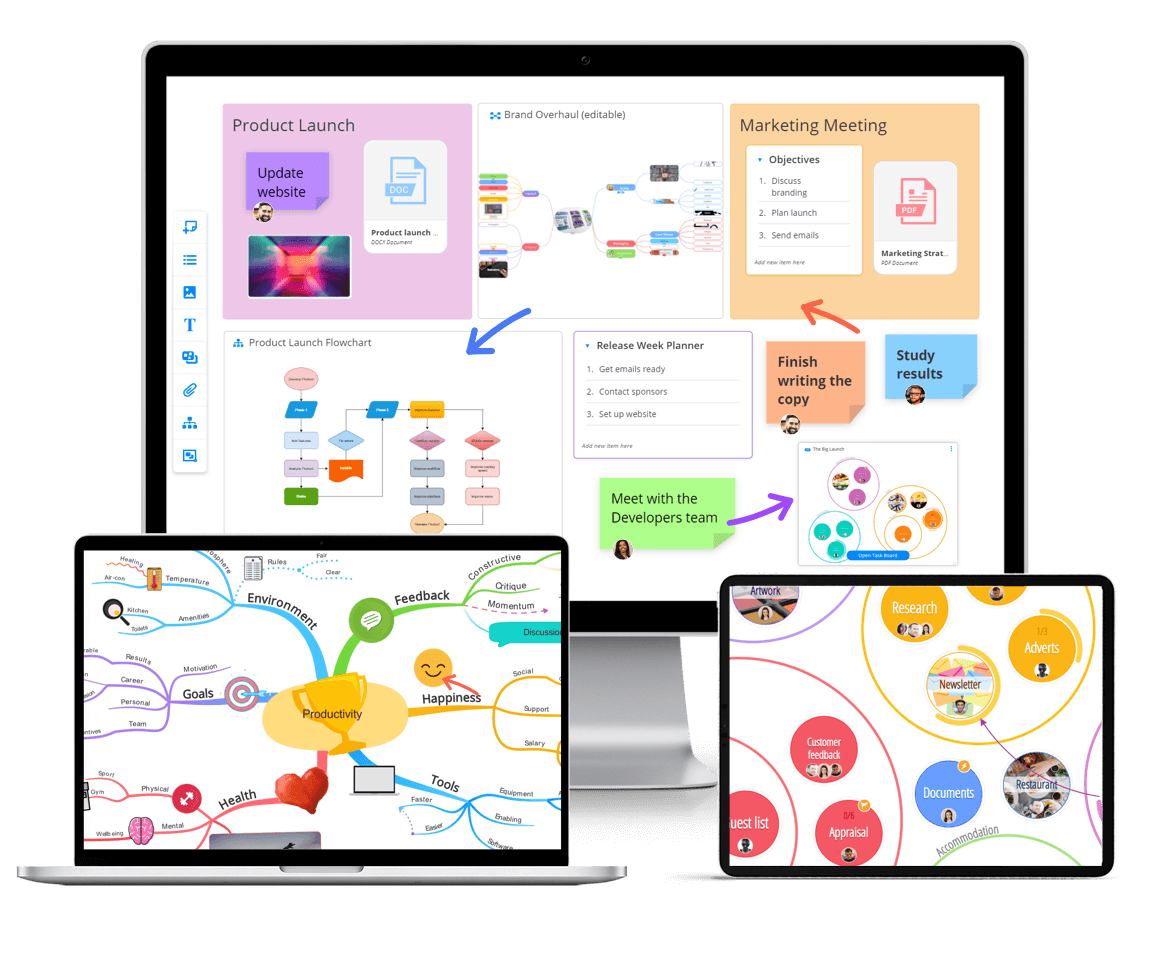October 6, 2022 (Updated April 8th, 2024)
How to begin the conversation about dyslexia in school: a teacher’s guide and resources

It goes without saying that all educators want to support learners in the classroom. Teaching requires serious skill; no two students are the same, and in order to reach every one of them, a teacher must be versatile and attentive in equal measure. That’s why neurodiversity is an important consideration for all educators as differences in neurological make-up (including conditions such as Dyslexia, ADHD and autism) can impact learning styles. Which is why, to mark Dyslexia Awareness Week, we’ll be taking a deep dive into the ways educators can identify, understand and support dyslexic students within the classroom. Keep reading to find out more.
What is dyslexia, and how does it present in the classroom?
Dyslexia falls under the umbrella of neurodiversity and refers to a condition which affects a person’s ability to accurately process text, impacting areas such as reading and writing ability. Those with dyslexia may also have problems remembering information which may have a knock-on effect in terms of literacy skills. According to the European Dyslexia Association, roughly 9 – 12% of the population have dyslexia.
There is no one single way dyslexia might be spotted in the classroom. Age, subject area, and class size may all impact an educator’s ability to spot a dyslexic student – this is why screening is so important, as it allows for thorough and formal assessment. As the British Dyslexia Association states:
Still, educators can be on the lookout for certain symptoms which may indicate that a student should be put forward for screening. Based on information from the NHS, dyslexics may display some of the following symptoms (the following have been curated to relate specifically to a classroom environment, but you can see a full list of symptoms here):
- Unpredictable and inconsistent spelling throughout work
- Difficulty reading aloud both in front of class and in one-on-one sessions
- A disparity between speaking and writing ability (i.e. a pupil may perform better orally than in written work)
- Poor or illegible handwriting as well as slow overall writing speed
- Difficulty telling the time and/or following chronological orders or directions
- Trouble staying organised, sticking to deadlines and writing essays
- Difficulty or avoidance of note-taking in class
- Forgetting information typically recalled easily, for example login details or student numbers
Of course, this is far from an exhaustive list, but being aware of these symptoms and their relationship to dyslexia in the classroom may enable you to put forward students who will benefit from screening.
How to raise awareness of dyslexia in the classroom
As an educator, it’s important you understand that the challenges presented by dyslexia not only relate to the condition itself but the perceptions (or more aptly, misconceptions) people have of dyslexia in the world at large. Ensuring that you break the stigma around dyslexia within the learning environment will enable dyslexic students to feel more comfortable – whether in expressing difficulty, or being honest with their peers about personal strengths and weaknesses.
As all teachers know, education starts with the self. The Yale Centre for Dyslexia recommends that educators learn everything they can about dyslexia in order to dispel myths, and their Dyslexia FAQ page is a great place to start doing just that.
You can also seek more formal training to ensure that you’re as informed as possible — Made by Dyslexia offers free training via Connect the Spots which is suitable for teachers working with children. More intensive courses (some of which may require support from your educational institution) are also offered by the British Dyslexia Association, including a range of courses from eLearning and Open Training through to professional accreditation.
When you’re fully informed, you can work on raising awareness within the classroom. The Yale Centre for Dyslexia recommends starting with the word itself, saying:
By talking about dyslexia directly and openly in the classroom, you allow all students to engage with the subject comprehensively so they can further their own understanding. It’s also important to focus on the common strengths associated with dyslexia such as creativity and visual thinking skills, a conversation which may be aided by the introduction of role models who also have dyslexia – you explore historic and current examples in the dyslexia-friendly and fun format of digital mind maps here.
How to create an inclusive learning environment
Once you’ve discussed dyslexia within the classroom and broken down negative stereotypes and stigmas, it’s time to look at how you can support dyslexic learners through daily practice. In the neurodiverse world, the term ‘accessibility’ comes up a lot. Accessibility is defined by the UK government as follows:
For example, if you were to build a lesson around an extended writing and reading session without providing extra support to dyslexic students, then that would be considered inaccessible. This is because you’re putting dyslexic learners at a disadvantage by working with materials that limit their full potential in a way that does not limit neurotypical students (meaning those who do not have a neurological difference).
Of course, it may not always be possible to avoid the use of reading and writing in the classroom, but ensuring pupils have aids such as text-to-speech tools can help when such materials are necessary by negating the need for reading. However, I also suggest challenging yourself. Ask: Is text always the only option for a lesson handout or task? Getting creative with lesson plans will likely benefit all students and create a more engaging class for everyone.
You can also try the following tips to create a more inclusive learning environment
- Speak slowly and clearly – this gives dyslexic students more time to hear and process what you’re saying so that they can then act on instructions with confidence rather than hesitancy.
- Be patient with queries – being an educator can be a stressful job, but be patient with students who ask you to repeat instructions, this creates a positive atmosphere where learners feel able to be honest when they’re unclear on something.
- Go multi-media in lessons – where possible, supplement written text with information presented in other ways, whether pictorially, in audio, or through video. This will make lessons more engaging and digestible for dyslexic students.
- Keep materials accessible – make sure any printed or digital materials are dyslexia friendly by using accessible fonts and background colours, you can access a full dyslexia-friendly style guide via Cartridge People (available here).
- Incorporate natural breaks – no student learns through sheer force of will. Within reason, allow students to take a natural pause when they need it. By taking breaks when they need it, dyslexic students can focus more intently when they get back to work.
- Introduce accessible tools – while tools designed specifically for dyslexic students can be a great help, it’s important they still feel a part of the wider class, an app like Ayoa is designed to be neuro-inclusive and visual so it can be used by both neurodivergent and neurotypical alike (perfect for homework assignments or essay planning!).
- Be mindful when marking – it wasn’t so long ago that dyslexic students were made to feel inadequate as their work was marked down without consideration for their condition, so – where possible – try to mark the content of their work without allowing spelling or grammatical mistakes to mar their overall grade. This will empower, rather than disenfranchise dyslexic students.
- Narrativise your teaching – where possible, avoid falling back on teaching techniques which require pupils to memorise things without context. Instead, try bringing stories and ideas into the equation to improve memorability and accessibility for both neurotypical and neurodiverse students.
Bringing it all together
Teachers play an integral role in supporting dyslexic learners; your empathy, understanding and approach to teaching can make all the difference. By taking the time to educate yourself and your class, plus adjust your teaching approach accordingly, you will ensure that dyslexic learners are not put at a disadvantage. There’s no doubt that, given the right environment, dyslexic students are capable of incredible things. By supporting them fully you are helping to create a fairer world where differences in neurological make up need not limit a person, and indeed may enable them to flourish into something incredible.

Deliver inclusive Learning
Ayoa is an all-in-one platform where minds expand, learning becomes collaborative, and teaching is fun. Turn heads as you make education about looking forwards rather than backwards with Ayoa's neuro-inclusive properties, great for all learners!
Try it for free
